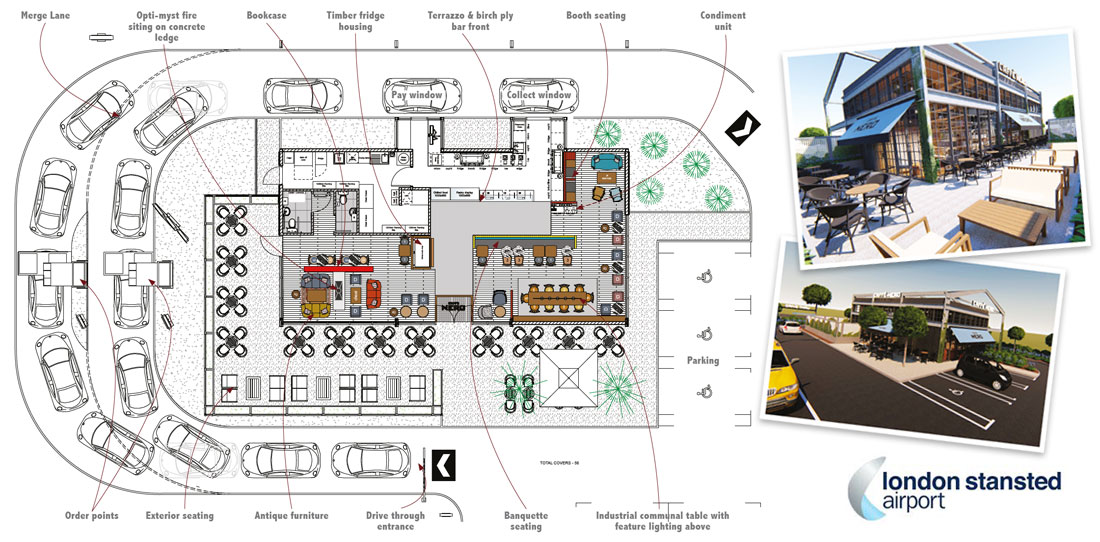
Brand Environments – What are they?
Many people talk about environmental branding, but what exactly is it? Branded Environments are intentionally built surroundings that serve as the physical embodiment of a brand. Or in more simple terms a brand experience. Imagine how great it would be for your customers to have a full awe-inspiring adventure when they walk into your cafe, restaurant, or office. A brand environment works by communicating to your visitors (or chosen audience) about what you stand for. These carefully designed spaces utilise both creative and architectural elements while embracing functionality and information, all these aim to cultivate an authentic experience. Branded environments are the ultimate asset for companies that understand the value of expressing their brand in everything they do and every place they do it. Whether it’s in an airport, office, or restaurant for an ultimate night out, there is no greater asset or expression of a brand. It’s important to understand how people behave and react to physical space and connect your customers to your promise while bringing your brand to life.
What are the Benefits?
Some of the most powerful companies in the world use Branded Surroundings to drive brand recognition, customer loyalty, employee retention, and revenue. Aware of the fact that these environments are amongst their biggest assets. Whilst strong branding is the first step in a successful product, a vast galaxy of environmental branding is key to putting stars in the eyes of your consumers. Knowing that consumers form brand impressions in 1/10 of a second it’s important you can convey your message quickly. A well-branded space is a powerful thing and when done properly, it can:
- Strengthen brand awareness and reinforce your brand’s identity
- Help you stand out from your competitors and give you an edge
- Identify and promote your core values, specialties, and strengths
- Transform your building into an inspirational, and engaging space
How to Create Environmental Branding
Step 1
First and foremost – Research! Step one is the most crucial one as it paves the way for the entire process. When we set out on a project we find out everything we can about a client’s brand, their personality, and what story they would like to tell. Who’s the ideal customer and why?
Step 2
Discovery – Competitor research, who are they, what are their strengths, and even more importantly their weaknesses? Get to know everything so you can ensure your project is a success. At Bedrock Design we make it our business to find out, conduct interviews, and gather as much material as possible on the project at hand.
Step 3
Compile Assets – Project managers will begin internal design discussions and compile a list of assets needed. Communication should begin with outside parties for forecasting production and timelines.
Step 4
Conceptual Design – After building on the initial design concept, you then move on to design development. At this stage, the concept ideas are usually brought to life through good old-fashioned 3D sketches, elevations, and CAD renders. Mood boards are created along with bespoke items, product samples for furnishings and fittings, all fully costed and ready for approval.
Step 5
Fabrication – Moving from design to production is always an exciting process. The delivery of a final design uses technical, manufacturing, and design experience to make a vision become a reality. During this phase, a project manager would keep things moving at a consistent pace in order to reach the installation deadline.
Step 6
Installation – Custom-built environments require an expert installation team. Construction would be overseen to ensure everything remains on time with the highest attention to the smallest details. Finally, the finished branded space would be handed to the client’s operations team.


